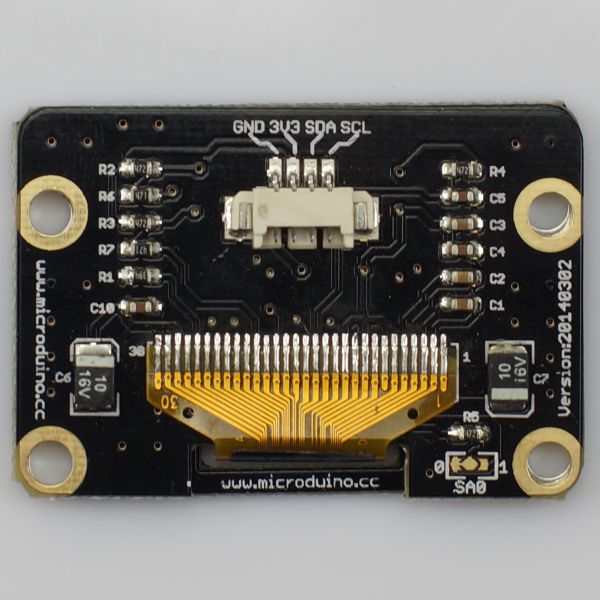“Microduino-OLED”的版本间的差异
(→Applications) |
(→Development) |
||
| 第48行: | 第48行: | ||
==Development== | ==Development== | ||
| − | * | + | *Microduino_OLED_U8glib:https://github.com/Microduino/Microduino_Tutorials/tree/master/Microduino_Libraries/_01_Microduino_OLED_U8glib |
| + | *Microduino_OLED_MultiLCD:https://github.com/Microduino/Microduino_Tutorials/tree/master/Microduino_Libraries/_01_Microduino_OLED_MultiLCD | ||
*【Adafruit_SSD1306 library'''[https://github.com/adafruit/Adafruit_SSD1306 github下载 ]''' 】 | *【Adafruit_SSD1306 library'''[https://github.com/adafruit/Adafruit_SSD1306 github下载 ]''' 】 | ||
| − | + | ||
|- | |- | ||
2014年7月2日 (三) 07:50的版本
| Language | English |
|---|
|
Microduino-Oled 12864 is based on SSD1306 0.96 inch 12864 OLED display module. Using the I2C interface, 3.3V power supply.
|
Features
|
Specifications
文件:OLED-Pinout-1.jpg Microduino-OLED-Pinout1 |
DocumentsEagle PCB 文件:Microduino-Oled.zip main components
|
Development
|
ApplicationsThe basic usage of u8glib library's sample program Note:core's IIC interface is A4(SDA),A5(SCL),core+'s IIC interface is D20(SDA),D21(SCL)
|
Buy |
History
|
Pictures
|


